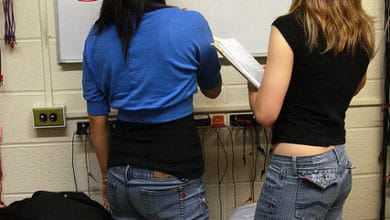AI-Powered Robotic Exoskeleton Enables Paraplegic Athlete to Carry Olympic Torch
In a groundbreaking moment for both technology and sports, French para-athlete Kevin Piette carried the Olympic flame 2024 using an AI-powered robotic exoskeleton. This event took place in front of the Temple of Hera in Ancient Olympia, Greece, marking the first time an athlete with a paraplegic condition has performed such a feat.
Kevin Piette, a 36-year-old French Paralympic tennis athletes as first paraplegic tester, gained viral attention with millions of views on social media while carrying the Olympic torch. The netzines eagerly anticipating his live action participation in the Cybathlon and future Paralympics events using robots while praising the technology that help him move again on his feet.
Piette, once a professional tennis player, became paraplegic after an accident at the age of 11 and lost leg functions. Despite his injury, he continued his athletic career, competing as a para-athlete. Recently, Piette took on a new role as an exoskeleton pilot for Wandercraft, a company originated in Paris – France and headquarter in New-York US known for developing innovative mobility solutions.
Wandercraft’s exoskeleton, Atalante X, is the world’s first self-stabilizing walking exoskeleton. It is designed to provide hands-free, multi-directional locomotion, emulating human walking.
The personal exoskeleton Piette used is part of Wandercraft’s efforts to improve the quality of life for individuals with mobility impairments. Currently utilized in rehabilitation centers, the Atalante X exoskeleton aims to offer greater independence and mobility to its users.
“The CEO of Wandercraft, Matthieu Masselin, said earlier:
‘At Wandercraft, we are dedicated to pioneering innovative solutions that enhance the self-stabilizing walking experience for the impaired community. We are committed to continuously improving our technology, keeping it at the forefront of our efforts.'”
This achievement has not only highlighted the advancements in assistive technology but also garnered widespread admiration. Anand Mahindra, an Indian business tycoon, expressed his awe on social media, praising both Piette’s determination and the technological breakthrough.
As technology continues to advance, the integration of AI in assistive devices like exoskeletons promises to revolutionize the lives of many, offering new possibilities for independence and mobility to those with physical disabilities.
Related News:
- South Korea: Robot Commits Suicide Due to Overwork
- Researchers Develop Magical Perovskite Solar Cell with a Record 11% Efficiency
- Scientists Finally Discovered a New “Magical” Magnet
- Betavolt Developed a Nuclear Battery Has a 50-Year Lifespan







